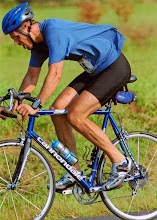Failure is a dirty word to most people.
Tell someone they failed and it conjures up memories of 9th
grade algebra tests or not getting the part in the community playhouse version
of Music Man. Failure usually results from not trying hard enough or not being
good enough. It can leave you feeling empty, frustrated, angry with yourself or
with the teacher who graded the exam or the director who didn’t appreciate your
version of "Seventy-Six Trombones.”
Failure can make people give up or make them try harder.
Today’s theme is FAILURE is NOT BAD, FAILURE is ESSENTIAL.
Striving for failure is the best way to improve. In the
technology field, engineers try their best to stress their software or networks
to find the limits so they can focus on how to make them better. Scientists
will test 100s of hypotheses that don’t pan out, all of which help lead them to
the one hypothesis that can be supported by their experiments.
For some reason, in fitness, people want constant success.
Unfortunately, lack of failure will hold you back.
We do a lot of circuit training in our boot camps and with
our clients. Each station in the circuit is an exercise and the goal is to do
as many reps of the exercise as you can in 40 seconds. It is pretty straight
forward. Learn the movement, select the weight and go for it.
What is interesting to see is how different people approach
the 40 seconds. A common question is “What weight should I use?” I give some
guidance based on their current capabilities and then let them choose.
Some people choose a weight that will allow them to succeed.
Success meaning being able to do the exercise for the full 40 seconds without
stopping. Others choose a weight that will force them to fail. They can’t lift
the weight continually for 40 seconds and have to stop early or rest in the
middle and then continue.
And without question, the
people who get the best results are the people who choose a weight that forces
them to fail.
Failure is the best way to shine a light on your
limitations. Reaching the point of failure will do two things:
-
show you what your maximum capacity is, and
-
guarantee that you are working your body to that
maximum capacity
Once you know what you are currently capable of, you have a
measurement tool for the next time. If you choose 15 lbs dumbbells (remember
to put away your 5 lbs dumbbells) and have to stop after 35 seconds then
the next time you have a goal to shoot for…get to 36 seconds.
The next time you workout remember to choose a weight that
will force failure. It will help you in the long run.
